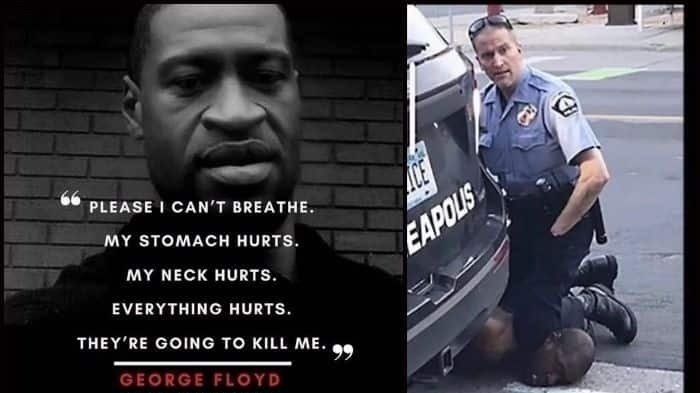
MINNEAPOLIS – Derek Chauvin, the former police officer seen on video pressing his knee to George Floyd’s neck for more than nine minutes, was found guilty of all counts he was charged with, including second-degree murder, on Tuesday.
Chauvin, who is white, was charged with second-degree and third-degree murder, as well as second-degree manslaughter in the death of George Floyd on May 25, 2020, while in police custody.
Cell phone video of the incident went viral and touched off months of protests in the U.S. and abroad condemning police brutality and calling for racial justice. The widely watched trial, which began in March with jury selection, was livestreamed —Minnesota’s first criminal case to be televised.
Chauvin faces a recommended 150 months or 12 1/2 years in prison under sentencing guidelines for first-time offenders. But the prosecution is seeking a higher prison term due to “aggravating factors.” So he may face up to 30 years in prison though the judge may sentence him to less.
Here’s what to know about the charges:
Guilty: Second-degree murder charge
Second-degree murder is causing the death of a human being, without intent to cause that death, while committing or attempting to commit another felony. In this case, the felony was third-degree assault. Chauvin was charged with committing or intentionally aiding in the commission of this crime.
To convict Chauvin on this count, Judge Peter Cahill told jurors they must find that the former officer intended to commit an assault that could cause bodily harm or intentionally aided in committing such an assault.
“It is not necessary for the state to prove the defendant had an intent to kill Floyd. But it must prove that the defendant committed, or attempted to commit, the underlying felony,” the judge said.
Cahill added that the state must prove that the assault either inflicted bodily harm on Floyd or was intended to commit bodily harm. That essentially could include loss of consciousness, the judge said.
“It is not necessary for the state to prove that the defendant intended to inflict substantial bodily harm, or knew that his actions would inflict substantial bodily harm, only that the defendant intended to commit the assault, and George Floyd sustained substantial bodily harm,” Cahill said.
Guilty: Third-degree murder charge
Third-degree murder is unintentionally causing someone’s death by committing an act that is eminently dangerous to other persons while exhibiting a depraved mind, with reckless disregard for human life. Chauvin was accused of committing or intentionally aiding in the commission of this crime.
Under Minnesota law, an act that is eminently dangerous is one that “is highly likely to cause death,” Cahill told jurors. “The defendant’s act may not have been specifically intended to cause death,” and “it may not have been specifically directed at the person whose death occurred, but it must have been committed with a conscious indifference to the loss of life,” said the judge.
Cahill ruled last fall that this charge did not fit the Chauvin case because the statute required a showing of danger to other persons. However, a Minnesota appeals court in February upheld the third-degree murder conviction of former Minneapolis police officer Mohamed Noor, who fatally shot Justine Ruszczyk Damond in 2017. Noor’s actions were focused solely on Damond.
During jury selection in the Chauvin trial, the appeals court ruled that Cahill should not have dismissed this charge. He subsequently reinstated the allegation. The Minnesota Supreme Court is scheduled to hear an appeal of the Noor decision in June.
Guilty: Second-degree manslaughter charge
Second-degree manslaughter is culpable negligence where a person creates an unreasonable risk and consciously takes the chance of causing death or great bodily harm to someone else. Chauvin was charged with committing or intentionally aiding in the commission of this crime.
“Culpable negligence is intentional conduct that the defendant may not have intended to be harmful, but that an ordinary and reasonably prudent person would recognize as having a strong probability of causing injury to others,” Cahill told jurors.
In summing up his legal instructions on the charges, Cahill told the jury there is no crime if a line of duty police officer uses reasonable force to make a lawful arrest. He instructed the jurors to consider the “totality of the facts and circumstances” in deciding whether Chauvin’s actions had been reasonable.
USA Today
Leave a Reply
You must be logged in to post a comment.